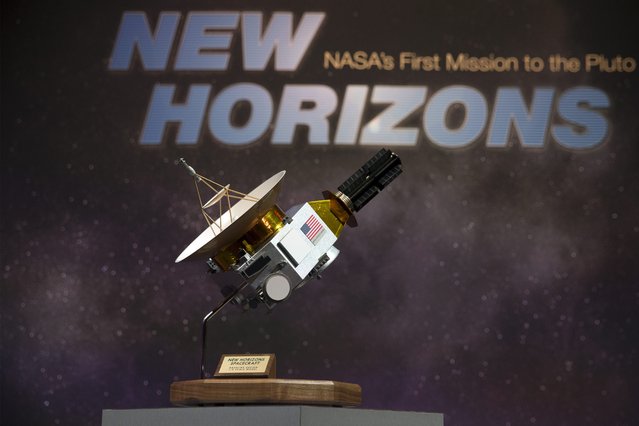
A model of the New Horizons spacecraft is seen at a live television program on NASA television celebrating the spacecraft's closest proximity to Pluto, at Johns Hopkins University Applied Physics Laboratory, site of the mission operations center, in Laurel, Maryland, USA, 14 July 2015. At approximately 7:49 am ET (11:49 am GMT), 14 July, New Horizons was scheduled to be as close to Pluto as the spacecraft will get; about 7,800 miles (12,500 kilometers) above the surface, following a journey of more than nine years and three billion miles. This is the first mission to the Pluto System and the Kuiper Belt. (Photo by Michael Reynolds/EPA)
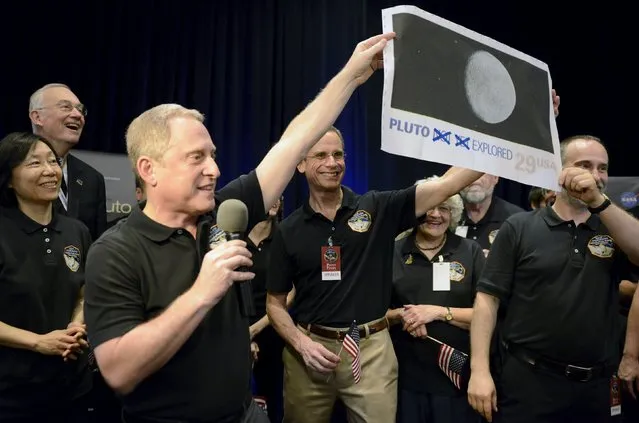
NASA Principal Investigator for New Horizons mission Alan Stern (L) and Co-Investigator Will Grundy (R) hold up an enlarged, out-dated U.S. postage stamp with the “NOT YET” crossed out, during the celebration of the spacecraft New Horizons flyby of Pluto, at NASA's Johns Hopkins Applied Physics Laboratory in Laurel, Maryland, July 14, 2015. The flyby, which culminated after almost ten years of flight and over three billion miles, will allow New Horizons to photograph and collect data in the coming months. (Photo by Mike Theiler/Reuters)

Pluto and its largest moon, Charon, taken by the Ralph color imager aboard NASA's New Horizons spacecraft, April 9, 2015. It is the first color image ever made of the Pluto system by a spacecraft on approach, according to NASA. The image was made from a distance of about 71 million miles. (Photo by Reuters/NASA/Johns Hopkins University Applied Physics Laboratory/Southwest Research Institute)
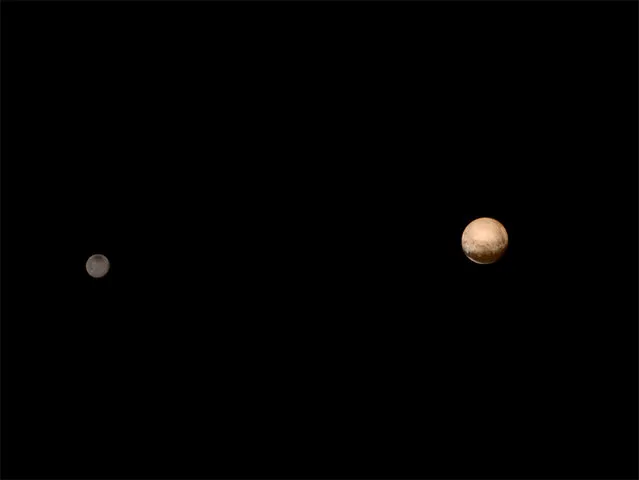
Pluto (R) and its moon Charon are pictured from about 6 million kilometers in this July 8, 2015 NASA handout photo from the New Horizons Long Range Reconnaissance Imager (LORRI). (Photo by Reuters/NASA)
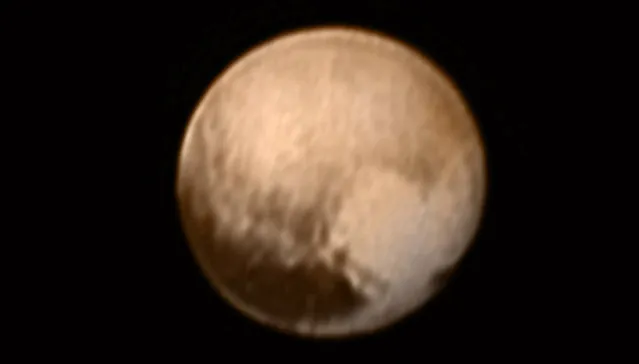
Pluto is pictured in this July 7, 2015 handout image from New Horizons Long Range Reconnaissance Imager (LORRI).This image, the most detailed yet returned by the LORRI aboard New Horizons – has been combined with lower-resolution color information from the Ralph instrument. (Photo by Reuters/NASA)
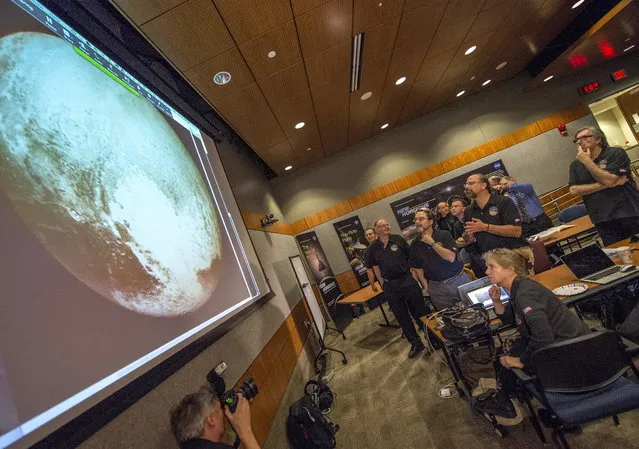
Members of the New Horizons science team react to seeing the spacecraft's last and sharpest image of Pluto before closest approach later in the day at the Johns Hopkins University Applied Physics Laboratory (APL) in Laurel, Maryland July 14, 2015. (Photo by Bill Ingalls/Reuters/NASA)

An artist's impression of NASA's New Horizons spacecraft encountering Pluto and its largest moon, Charon, July 2015. The first spacecraft to visit distant Pluto, a dwarf planet in the solar system's frozen backyard, is still three months away from a close encounter, but already in viewing range, newly released photos show. (Photo by Reuters/NASA/Applied Physics Laboratory/Southwest Research Institute)
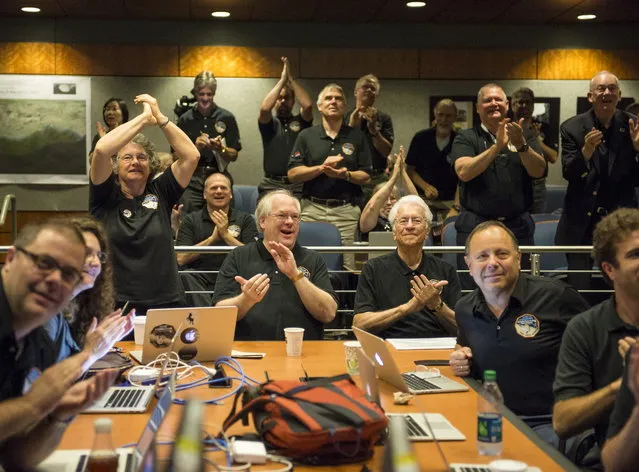
Members of the New Horizons science team react to seeing the spacecraft's last and sharpest image of Pluto before closest approach later in the day at the Johns Hopkins University Applied Physics Laboratory (APL) in Laurel, Maryland July 14, 2015. The craft flew by the distant "dwarf" planet at 7:49 a.m. after reaching a region beyond Neptune called the Kuiper Belt that was discovered in 1992. The achievement is the culmination of a 50-year effort to explore the solar system. (Photo by Bill Ingalls/Reuters/NASA)
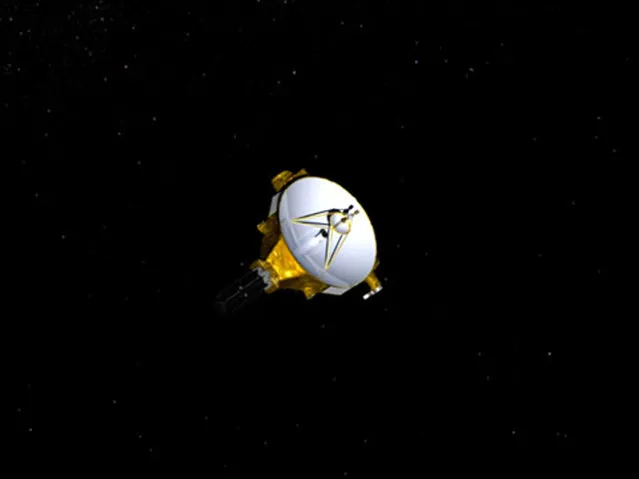
An artist's impression of NASA's New Horizons spacecraft, currently en route to Pluto, is shown in this handout image provided by NASA/JHUAPL. (Photo by Reuters/NASA/Johns Hopkins University Applied Physics Laboratory/Southwest Research Institute)
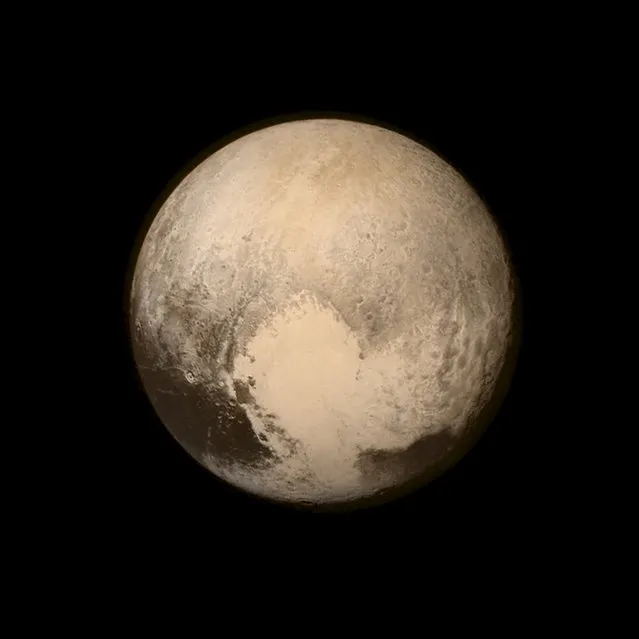
Pluto nearly fills the frame in this image from the Long Range Reconnaissance Imager (LORRI) aboard NASA's New Horizons spacecraft, taken on July 13, 2015, when the spacecraft was 476,000 miles (768,000 kilometers) from the surface and released on July 14, 2015. This is the last and most detailed image sent to Earth before the spacecraft's closest approach to Pluto on July 14. (Photo by Reuters/NASA/APL/SwRI)
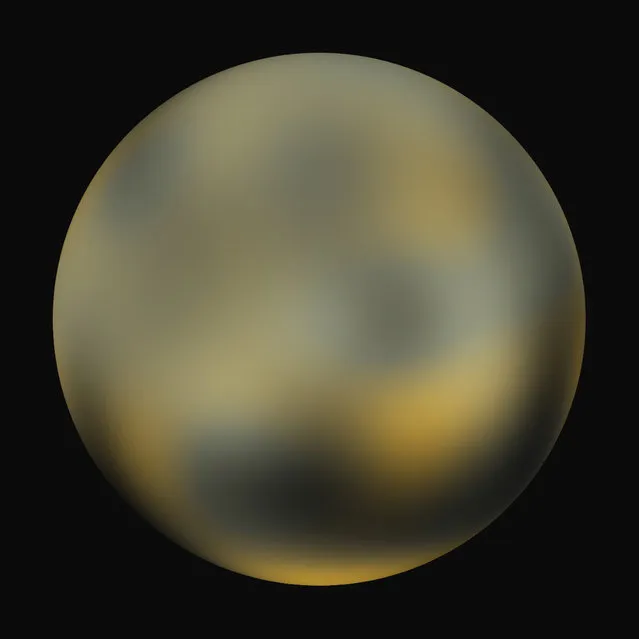
The most detailed view to date of the entire surface of the dwarf planet Pluto as constructed from multiple NASA Hubble Space Telescope photographs taken from 2002 to 2003 and released on February 4, 2010. (Photo by Reuters//NASA, ESA, and M. Buie (Southwest Research Institute))
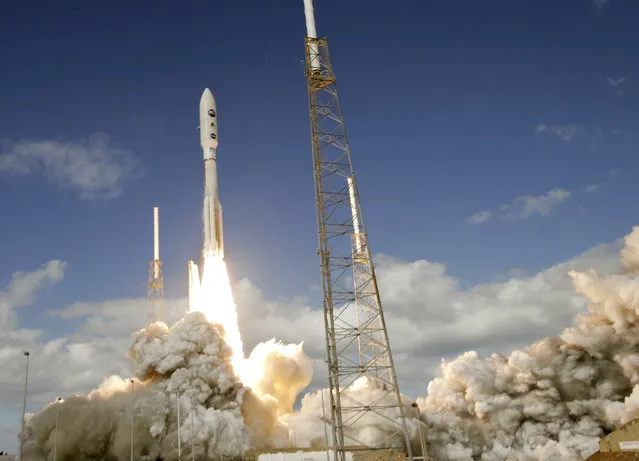
The Atlas V rocket with the New Horizons spacecraft blasts off from complex 41 at the Cape Canaveral Air Force Station in Cape Canaveral, Florida January 19, 2006. Atlas V and New Horizons are on a mission to Pluto and its moon Charon. (Photo by Rick Fowler/Reuters)
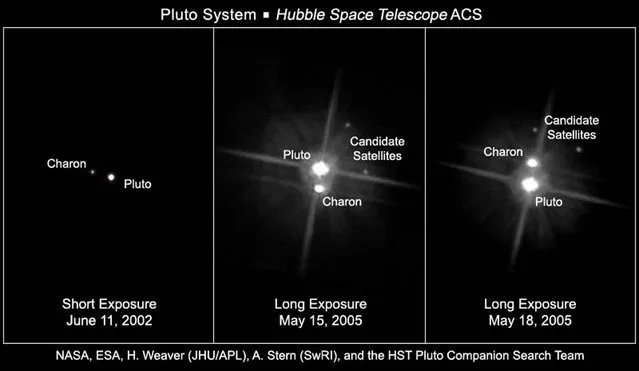
Hubble Space Telescope images, taken by the Advanced Camera for Surveys, show Pluto, its large moon Charon, and the planet's two new putative satellites June 11, 2002. (Photo by Reuters/NASA)
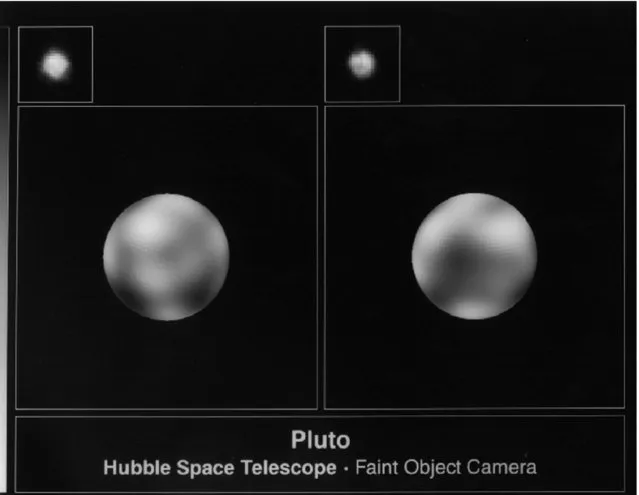
Pictures of the surface of the planet Pluto by NASA March 7, 1996. The pictures, taken from the Hubble Space Telescope with the European Space Agency's Faint Object Camera, were made in June and July of 1994 and show that Pluto is an unusually complex object with more large-scale contrast than any other planet except Earth. (Photo by Reuters/NASA)
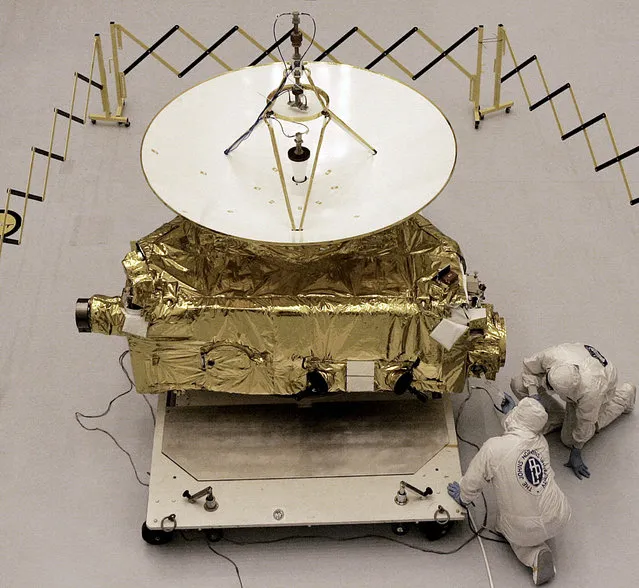
NASA's New Horizons spacecraft, to be launched toward the planet Pluto, is displayed at the Kennedy Space Center in Cape Canaveral, Florida November 4, 2005. (Photo by Charles W. Luzier/Reuters)
15 Jul 2015 10:08:00,
post received
0 comments
